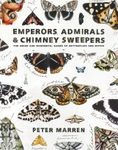About this book
Life in Ancient Ice presents an unparalleled overview of current research into microbial life in ancient glacial ice and permafrost. Particulates of fungi, bacteria, pollen grains, protists, and viruses are carried by wind around the globe. When they fall to Earth in polar regions they may be trapped in ice for hundreds of millennia. Some of the many implications sound like science fiction – for example, might melting glaciers release ancient pathogens that yield modern-day pandemics? But rigorous, coordinated research is nascent. Life in Ancient Ice points the way forward. Based on a National Science Foundation-sponsored symposium organized by the editors in 2001, it comprises twenty chapters by internationally renowned scientists, including Russian experts whose decades of work has been rarely available in English.
Life in Ancient Ice begins by setting forth many protocols that have been used to study microorganisms trapped in ice, discussing their potential sources and presenting evidence for microbial metabolic activity at temperatures below freezing. This is followed by nine chapters describing the fungi, bacteria, and viruses that have been found in permafrost and glacial ice. Later chapters include a look at Antarctica's subglacial Lake Vostok, at a robot that can be lowered into ice to detect microbes, and at the use of icy environments on Earth as model systems for studying similar environments on planets and moons. The editors conclude by reviewing key discoveries and outlining important areas for future research.
Contents
List of Figures ix
List of Tables xiii
Contributors xv
Acknowledgments xix
CHAPTER 1: Introduction by John D. Castello and Scott O. Rogers 1
CHAPTER 2: Recommendations for Elimination of Contaminants and Authentication of Isolates in Ancient Ice Cores by Scott O. Rogers, Li-Jun Ma, Yinghao Zhao, Vincent Theraisnathan, Seung-Geuk Shin, Gang Zhang, Catherine M. Catranis, William T. Starmer, and John D. Castello 5
CHAPTER 3: Perennial Antarctic Lake Ice: A Refuge for Cyanobacteria in an Extreme Environment by John C. Priscu, Edward E. Adams, Hans W. Paerl, Christian H. Fritsen, John E. Dore, John T. Lisle, Craig F. Wolf, and Jill A. Mikucki 22
CHAPTER 4: The Growth of Prokaryotes in Antarctic Sea Ice: Implications for Ancient Ice Communities by David S. Nichols 50
CHAPTER 5: Frozen in Time: The Diatom Record in Ice Cores from Remote Drilling Sites on the Antarctic Ice Sheets by Davida E. Kellogg and Thomas B. Kellogg 69
CHAPTER 6: The Nature and Likely Sources of Biogenic Particles Found in Ancient Ice from Antarctica by Raymond Sambrotto and Lloyd Burckle 94
CHAPTER 7: Microbial Life below the Freezing Point within Permafrost by Elizaveta Rivkina, Kayastas Laurinavichyus, and David A. Gilichinsky 106
CHAPTER 8: Yeasts Isolated from Ancient Permafrost by Rushaniya N. Faizutdinova, Nataliya E. Suzina, Vitalyi I. Duda, Lada E. Petrovskaya, and David A. Gilichinsky 118
CHAPTER 9: Fungi in Ancient Permafrost Sediments of the Arctic and Antarctic Regions by Nataliya E. Ivanushkina, Galina A. Kochkina, and Svetlana M. Ozerskaya 127
CHAPTER 10: Viable Phototrophs: Cyanobacteria and Green Algae from the Permafrost Darkness by Tatiana A. Vishnivetskaya, Ludmila G. Erokhina, Elena V. Spirina, Anastasia V. Shatilovich, Elena A. Vorobyova, Alexander I. Tsapin, and David A. Gilichinsky 140
CHAPTER 11: The Significance and Implications of the Discovery of Filamentous Fungi in Glacial Ice by Li-Jun Ma, Catherine M. Catranis, William T. Starmer, and Scott O. Rogers 159
CHAPTER 12: Yeasts in the Genus Rhodotorula Recovered from the Greenland Ice Sheet by William T. Starmer, Jack W. Fell, Catherine M. Catranis, Virginia Aberdeen, Li-Jun Ma, Shuang Zhou, and Scott O. Rogers 181
CHAPTER 13: Plant and Bacterial Viruses in the Greenland Ice Sheet by John D. Castello, Scott O. Rogers, James E. Smith, William T. Starmer, and Yinghao Zhao 196
CHAPTER 14: Viral Pathogens of Humans Likely to Be Preserved in Natural Ice by Dany Shoham 208
CHAPTER 15: Classification of Bacteria from Polar and Nonpolar Glacial Ice by Brent C. Christner, Ellen Mosley-Thompson, Lonnie G. Thompson, and John N. Reeve 227
CHAPTER 16: Common Features of Microorganisms in Ancient Layers of the Antarctic Ice Sheet by S.S. Abyzov, M.N. Poglazova, J.N. Mitskevich, and M.V. Ivanov 240
CHAPTER 17: Comparative Biological Analyses of Accretion Ice from Subglacial Lake Vostok by Robin Bell, Michael Studinger, Anahita Tikku, and John D. Castello 251
CHAPTER 18: Search for Microbes and Biogenic Compounds in Polar Ice Using Fluorescence by Ryan Bay, Nathan Bramall, and P. Buford Price 268
CHAPTER 19: Living Cells in Permafrost as Models for Astrobiology Research by Elena A. Vorobyova, V.S. Soina, A.G. Mamukelashvili, A. Bolshakova, I.V. Yaminsky, and A.L. Mulyukin 277
CHAPTER 20: A Synopsis of the Past, an Evaluation of the Current, and a Glance toward the Future by John D. Castello and Scott O. Rogers 289
Index 301
Customer Reviews
Biography
John D. Castello is Professor of Environmental and Forest Biology in the College of Environmental Science and Forestry, State University of New York. Scott O. Rogers is Professor and Chair of Biological Sciences at Bowling Green State University.


































